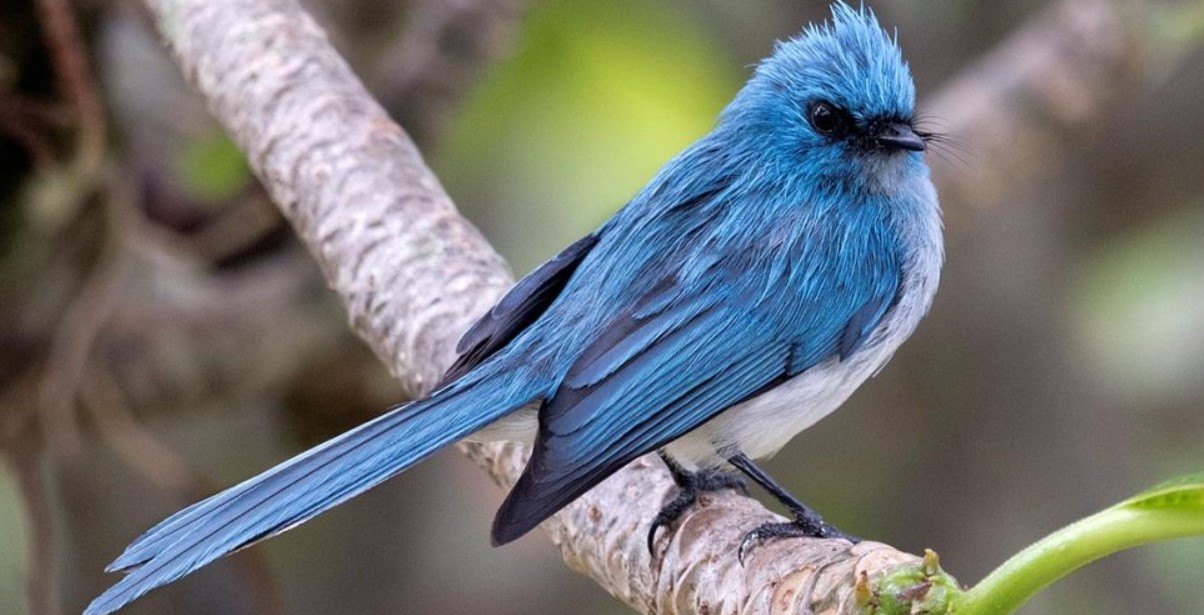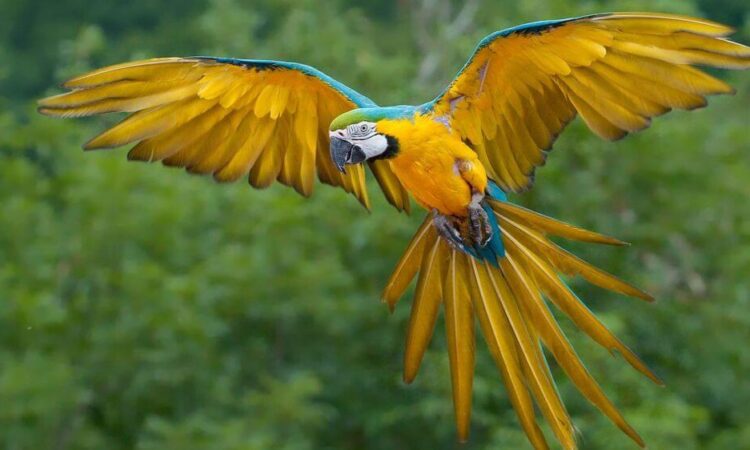Birdwatching in Kibale Forest National Park
Uganda’s Avian Paradise
In the heart of Uganda’s lush western highlands, Kibale Forest National Park is celebrated not only for its primate diversity but also as one of Africa’s premier birdwatching destinations. This tropical rainforest, spanning approximately 795 square kilometers, hosts over 370 recorded species of birds, many of which are endemic to the Albertine Rift. For ornithologists, nature enthusiasts, and eco-tourists, Kibale offers an unparalleled opportunity to experience a rich tapestry of avian life, from vibrant sunbirds to elusive turacos and rare forest specialists.
Birdwatching in Kibale is more than a leisurely pursuit; it is an immersive exploration of ecological interactions, conservation challenges, and evolutionary marvels. The dense canopy, interspersed with swampy clearings, streams, and rolling highlands, creates a dynamic habitat supporting both resident and migratory species. Each trail reveals hidden patterns, intricate calls, and behavioral displays that convey the complexity of life in this rainforest.
This guide provides a comprehensive overview of birdwatching in Kibale Forest National Park, detailing habitats, key species, observation techniques, seasonal considerations, conservation context, and visitor preparation. By understanding the forest’s avian richness, travelers can fully appreciate the depth and diversity of experiences awaiting them in Uganda’s western highlands.
Understanding Kibale’s Avian Diversity
Habitat and Ecological Significance
Kibale Forest comprises tropical lowland rainforest, swamp forest, grasslands, and riverine ecosystems. These habitats create vertical and horizontal stratification, supporting birds with varying ecological niches. Canopy dwellers such as turacos and hornbills coexist with understory species including greenbuls and warblers, while riparian zones attract kingfishers, herons, and other water-associated species.
The park’s location within the Albertine Rift enhances its ecological importance. This biodiversity hotspot is characterized by high levels of endemism and species richness, making Kibale a vital site for both global conservation and ornithological research. Bird populations are influenced by seasonal variations, food availability, and habitat quality, highlighting the interconnectedness of ecological processes.
Resident and Migratory Species
Resident species form the backbone of Kibale’s bird population. Great blue turacos, with their iridescent plumage, dominate the canopy, while black-and-white-casqued hornbills provide distinctive calls throughout the forest. Sunbirds, bulbuls, and flycatchers are commonly observed in mid-canopy and understory layers, exhibiting diverse foraging behaviors and territorial displays.
Migratory species arrive seasonally, particularly during Uganda’s dry and wet cycles. European migrants and other Afrotropical birds supplement the resident population, creating temporal dynamics that attract birdwatchers seeking rare or seasonal sightings. The combination of endemic, resident, and migratory species makes Kibale an exceptional location for comprehensive avian observation.
Planning a Birdwatching Trip to Kibale
Accessibility and Accommodation
Kibale Forest National Park is accessible primarily from Fort Portal, a nearby town approximately 5 to 6 hours by road from Kampala. Roads are generally well-maintained, though forest access may involve narrow tracks and occasional mud during rainy periods. Fort Portal provides accommodation options ranging from eco-lodges to boutique hotels, allowing visitors to remain close to the forest and optimize observation times.
Park headquarters serve as the starting point for birdwatching excursions. Permits are obtained on-site, and experienced guides offer orientation and trail selection based on birding interests. Early morning departures are recommended, as bird activity peaks during the first few hours after dawn, providing opportunities to observe feeding, singing, and territorial displays.
Equipment and Essentials
Successful birdwatching in Kibale requires preparation and appropriate equipment. Binoculars are essential for canopy observation, while cameras with telephoto lenses facilitate photography of distant or shy species. Field guides and digital applications aid in species identification and call recognition, enhancing educational engagement. Clothing should be lightweight, breathable, and long-sleeved to provide protection from insects and vegetation. Rain gear is advised due to the forest’s frequent precipitation.
Birdwatching Habitats and Trails
Rainforest Canopy
The forest canopy is the domain of visually striking species such as great blue turacos, black-and-white-casqued hornbills, and yellow-billed starlings. Observation requires patience and upward scanning, often aided by binoculars. Canopy trails allow for movement beneath dense foliage, revealing complex interactions between birds, insects, and arboreal mammals.
Understory and Mid-Canopy Zones
The mid-canopy and understory provide opportunities to observe smaller, often secretive species. Sunbirds, greenbuls, and flycatchers exhibit foraging behaviors among shrubs and lower branches. Guides facilitate identification of subtle plumage differences, feeding patterns, and song variation. Observing these species requires careful attention to movement and sound, as they are easily overlooked yet contribute significantly to the forest’s biodiversity.
Riparian and Swamp Areas
Streams, ponds, and swampy clearings attract water-associated birds such as kingfishers, herons, and wagtails. These habitats offer a contrasting experience to the dense forest, highlighting adaptations for aquatic foraging and territorial behavior. Observation in these zones requires quiet movement and consideration of sensitive nesting areas, particularly during breeding seasons.
Iconic Species of Kibale
Turacos
Turacos are among the forest’s most emblematic species. The great blue turaco, with vivid blue and green plumage, dominates canopy observation points, often moving in family groups and vocalizing distinct calls. The smaller green turaco is similarly striking, blending green feathers with vibrant wing markings. Turacos serve as indicators of forest health, given their reliance on intact canopy layers and fruiting trees.
Hornbills
Hornbills are notable both for their appearance and ecological role. The black-and-white-casqued hornbill, in particular, is visually impressive, with large casques and loud, resonant calls. Hornbills contribute to seed dispersal and forest regeneration, linking birdwatching with ecological observation.
Sunbirds and Nectar Feeders
Sunbirds, such as the scarlet-tufted sunbird, are frequently observed feeding on flowering plants. Their iridescent plumage and rapid movements provide challenging yet rewarding observation and photography opportunities. Sunbirds illustrate the intricate relationships between avian species and floral resources, emphasizing the importance of pollination in tropical ecosystems.
Rare and Endemic Species
Kibale hosts several rare and Albertine Rift endemic birds, including the African green broadbill, yellow-eyed black flycatcher, and Chaplin’s barbet. Observing these species requires careful trail selection, knowledge of seasonal behavior, and guidance from experienced ornithologists. Encounters with these species are often highlights of a birdwatching itinerary, emphasizing the park’s global conservation significance.
Seasonal Considerations for Birdwatching
Bird activity in Kibale varies with seasonal cycles. The wet seasons, typically March to May and September to November, trigger fruiting events, insect abundance, and increased bird vocalizations. Migratory species are more prevalent during dry periods, offering opportunities to observe species that are otherwise absent.
Weather conditions influence trail accessibility and bird visibility. Early morning excursions provide optimal lighting and cooler temperatures, while midday periods may reduce activity as birds retreat to shaded areas. Seasonal awareness allows visitors to plan itineraries that maximize both species diversity and observational quality.
Observation Techniques and Best Practices
Successful birdwatching in Kibale relies on careful observation, patience, and ethical conduct. Guides often employ sound recognition, subtle movement detection, and knowledge of feeding patterns to locate species. Observers are encouraged to move slowly, minimize noise, and respect nesting or feeding territories.
Photography should be conducted without flash or close approach to nests, ensuring minimal disturbance. Binoculars and scopes enhance viewing and educational engagement, allowing detailed study of plumage, behavior, and interspecies interactions. Recording calls and songs can aid post-visit identification and contribute to citizen science initiatives.
Conservation Context and Ethical Tourism
Birdwatching in Kibale is intrinsically linked to conservation and sustainable tourism. Revenue generated from park entry fees and guided tours supports habitat protection, anti-poaching patrols, and ecological research. Observing birds in their natural habitat fosters awareness of forest health, ecosystem interdependence, and the threats posed by deforestation, climate change, and human encroachment.
Local communities benefit from tourism through employment, cultural exchange, and environmental education programs. Guides often share knowledge about forest ecology, bird behavior, and conservation initiatives, emphasizing responsible engagement and respect for wildlife. Birdwatching becomes a tool not only for recreation but also for advocacy and scientific contribution.
Complementary Activities for Birdwatchers
While birdwatching is a primary focus, visitors can enhance their experience with primate tracking, forest hikes, and ecological tours. Chimpanzee tracking provides insight into primate-bird interactions, while walks through swamp forests reveal species adapted to aquatic and riparian zones. Cultural visits to local communities offer perspectives on human-wildlife coexistence and traditional knowledge of forest ecology.
Integration with other parks, such as Queen Elizabeth and Rwenzori Mountains, allows extended birding circuits, encompassing savannah, wetland, and montane species diversity. This comprehensive approach maximizes observational opportunities and enriches understanding of Uganda’s avian richness.
Immersion in Uganda’s Avian Diversity
Birdwatching in Kibale Forest National Park is an immersive journey into the richness, complexity, and beauty of tropical rainforest ecosystems. From canopy turacos to understory sunbirds and rare endemics, every encounter highlights the intricate web of ecological interactions that sustain life in this Albertine Rift hotspot. Ethical observation, guided interpretation, and seasonal awareness amplify both the educational and emotional impact of the experience.
For travelers seeking a seamless, informed, and rewarding birdwatching adventure in Kibale, it is recommended that tours be arranged through WildHorn Africa. Their expertise ensures access to prime birding locations, knowledgeable guides, and sustainable practices, transforming a visit into a transformative exploration of Uganda’s avian treasures.




 WildHorn Africa – Authentic and unforgettable tours across Africa, guided by local experts who know the land, wildlife, and culture best.
WildHorn Africa – Authentic and unforgettable tours across Africa, guided by local experts who know the land, wildlife, and culture best.


